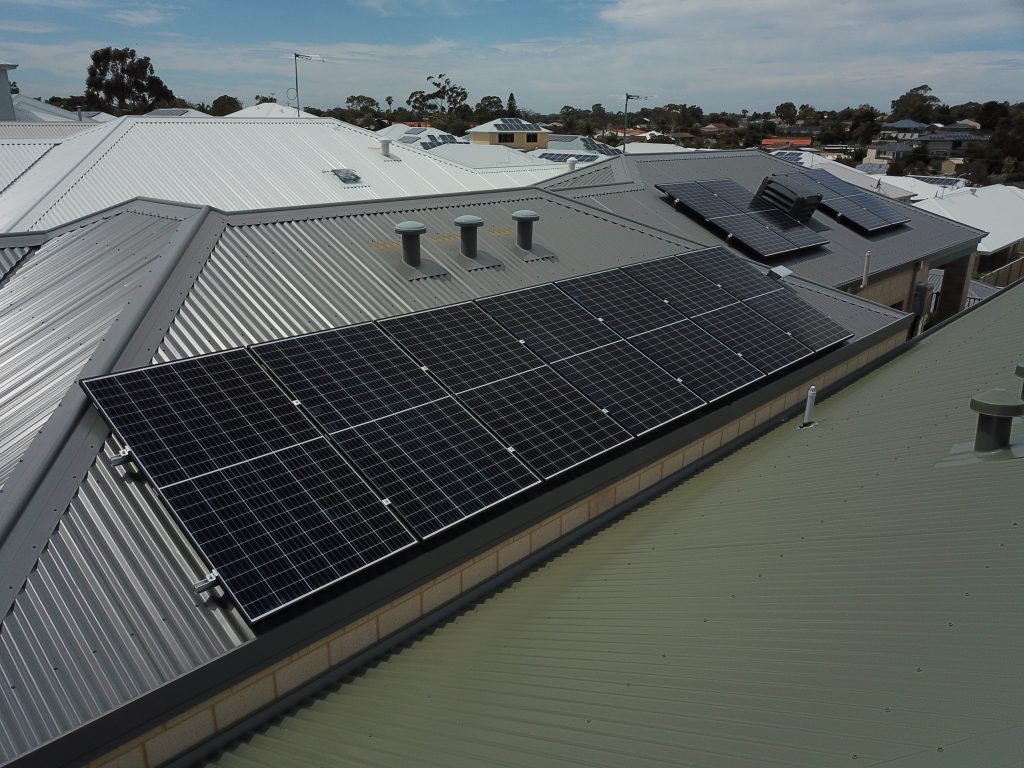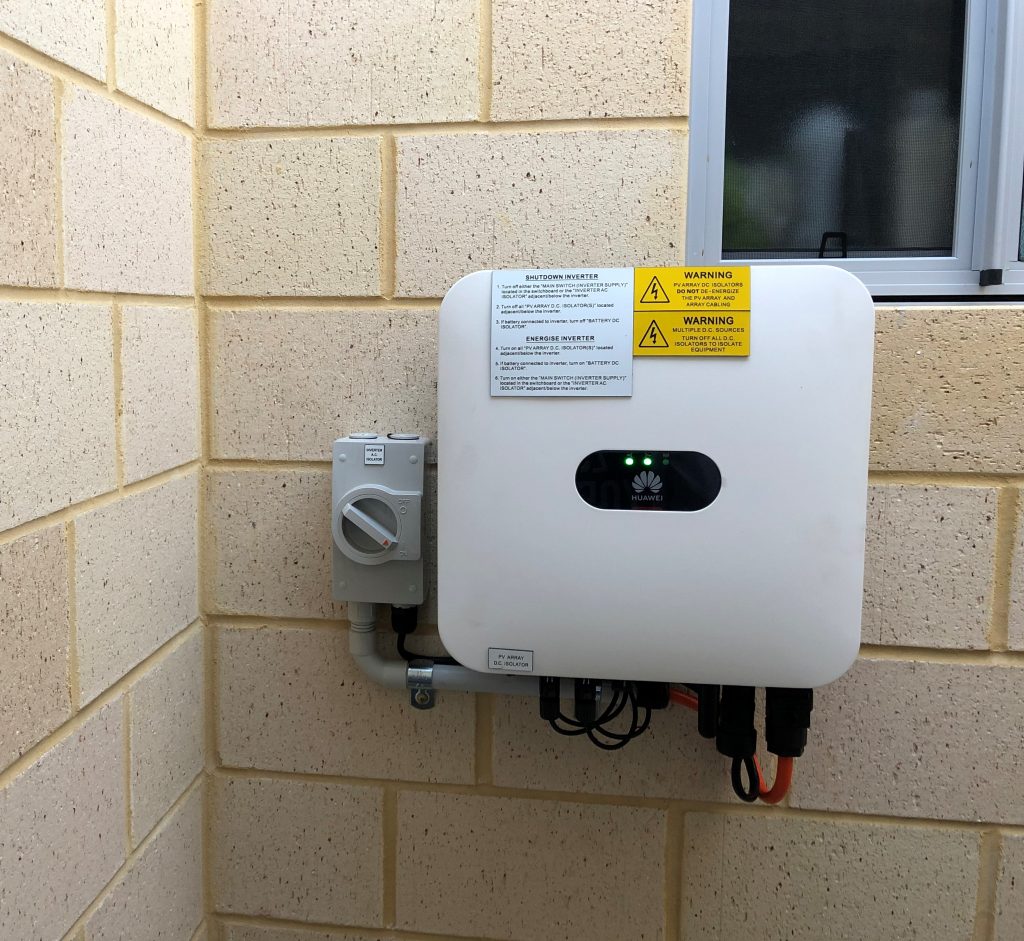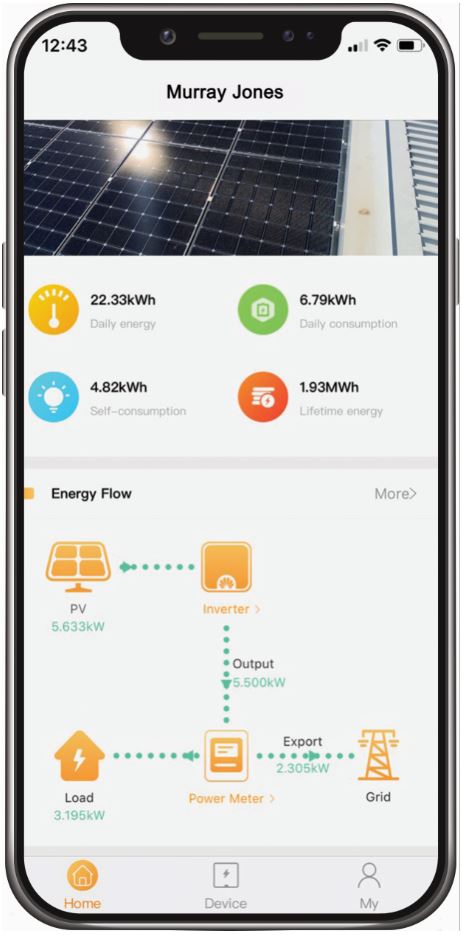Solar Panels and Solar Panel Installations in Perth
Now is the best time to start lowering your power bills and enjoying the long term benefits of clean energy usage. Take advantage of a new solar power system and fuel your home sustainably.


How Do Solar Power Systems Work?
When the sun is shining, solar panels (solar photovoltaic or solar PV systems) convert sunlight into Direct Current (DC) electricity. The solar inverter converts this electricity into Alternating Current (AC) power for use in your home. Your home appliances (fridge, dishwasher, pool pumps etc.) use this power instead of drawing power from the electricity grid.
You can use your smartphone or computer to monitor your energy production in real time.

Why Should I Be Installing Solar Panels?
-
Reduced electricity bills
-
Clean, renewable energy
-
Return on your investment
-
Low maintenance
-
Feed-in tariffs
Solar Batteries
Solar batteries are a fantastic investment, especially for residents of Perth. Perth has an average peak sunshine of 5.5 hours per day. Rather than sending your excess energy back to the grid, solar batteries allow you to store these and access them at times of low sunshine or when the grid is down. Solar batteries reduce your reliance on the grid, giving you clean energy independence and drastically reducing your electricity bills. While batteries will increase your upfront cost and payback period, over the long run a solar battery can make you massive savings.
How to choose the right solar panels for your needs
Now, you might be wondering how many solar panels you need to run your home? There are a few things to factor in when looking at what size solar system you should install.
How big is your roof?
If you have limited roof space, then you are going to have to prioritise efficiency in your solar pv system to ensure you can get enough power for your home with a limited number of panels. If you have plenty of roof space, then you could afford to use panels with less efficiency and have more of them installed.
How much energy does your house consume?
Homes with low energy usage can compromise power and efficiency for a cheaper price tag. For homes with high energy usage, you will need to be prioritising high-output panels to ensure you can meet your high energy requirements.
Is your roof obstructed by shade?
For homes with partial shading, there are two great solutions. Half Cell Panel technology is one great option (this is our standard residential option) rather than the entire panel switching off when there is partial shading. As with standard panels, the half cells split the panel into self-contained circuits, allowing one half to function at full capacity while the other half is in the shade. These half-cell panels are powerful, and efficient and are up there with our highest quality solar panels on the market.
Optimisers are another great option for those struggling with shade. They monitor the activity and efficiency of your panels and adjusts them to keep them working at their optimal level. Optimisers can greatly increase your Return On Investment for your panels.
The Average House
The 6.6kW solar panels are perfect for small to medium size houses. These panels come with a Goodwe inverter and 330W Half Cell Solar Panel technology. Half cells split a panel into self-contained circuits, minimising the effects of shading, improving efficiency and power output. On average you can expect these 6.6kW panels to produce approximately 28kW of electricity per day.
What is the Return On Investment (ROI) for residential solar panels?
Rebates
The government’s Renewable Energy Target (RET) is a policy that aims to “ensure that at least 33,000 gigawatt-hours (GWh) of Australia’s electricity comes from renewable sources by 2020.” To help Australians make this transition to solar, the government is incentivising renewable energy by providing rebates to discount the cost of solar technology. As we get closer to the end of the RET timeline, these rebates are being scaled down. The sooner you make the move to solar, the more cost effective it is.
These federal rebates come in the form of Small-scale Technology Certificates (STCs). You are awarded STCs based on the amount of kWh produced by your solar system. The greater the output of your system, the greater the subsidy available to you. These STCs can be sold by your CEC-Accredited installer, with the savings passed along to you in the form of a discount on the up-front cost of your system.
Payback Periods
Your Return On Investment (ROI) should be calculated based on the payback period of your system. The payback period is the amount of time it will take for your solar energy to pay off the initial cost of the system, through feed-in tariffs and reduced energy bills. In Australia, the average payback period is between 2 – 7 years. For Perth this is closer to 2 – 5 years due to the strong year-round sunshine. The average system will last for 25 years, giving you between 18 – 23 years of profit from the returns on your investment.
Contact Us
Contact us to speak to a friendly team member in our Perth office or Bunbury for a custom quote today!




